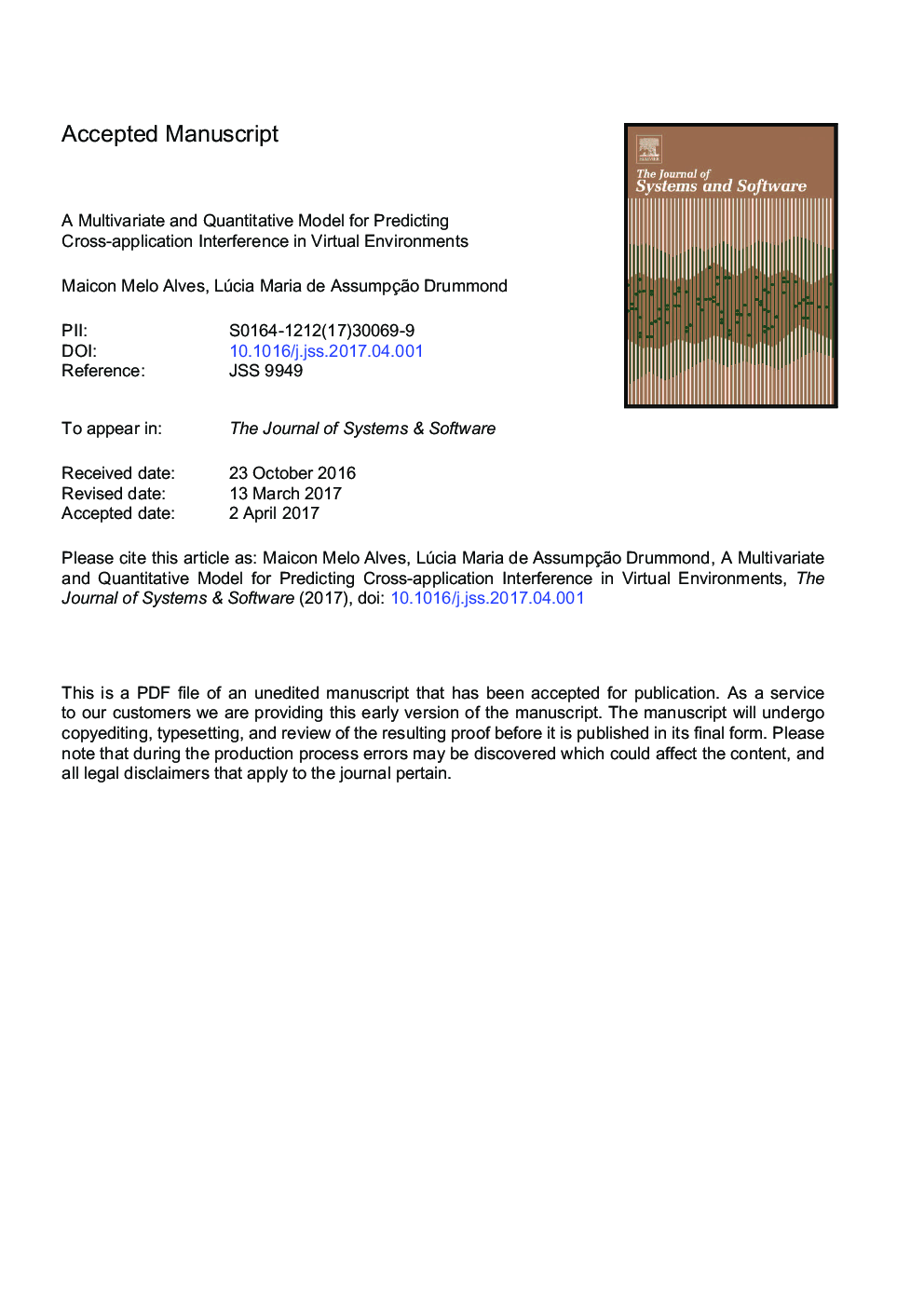| Article ID | Journal | Published Year | Pages | File Type |
|---|---|---|---|---|
| 4956483 | Journal of Systems and Software | 2017 | 19 Pages |
Abstract
Cross-application interference can drastically affect performance of HPC applications executed in clouds. The problem is caused by concurrent access of co-located applications to shared resources such as cache and main memory. Several works of the related literature have considered general characteristics of HPC applications or the total amount of SLLC accesses to determine the cross-application interference. However, our experiments showed that the cross-application interference problem is related to the amount of simultaneous access to several shared resources, revealing its multivariate and quantitative nature. Thus, in this work we propose a multivariate and quantitative model able to predict cross-application interference level that considers the amount of concurrent accesses to SLLC, DRAM and virtual network, and the similarity between the amount of those accesses. An experimental analysis of our prediction model by using a real reservoir petroleum simulator and applications from a well-known HPC benchmark showed that our model could estimate the interference, reaching an average and maximum prediction errors around 4% and 12%, and achieving errors less than 10% in approximately 96% of all tested cases.
Related Topics
Physical Sciences and Engineering
Computer Science
Computer Networks and Communications
Authors
Maicon Melo Alves, Lúcia Maria de Assumpção Drummond,
